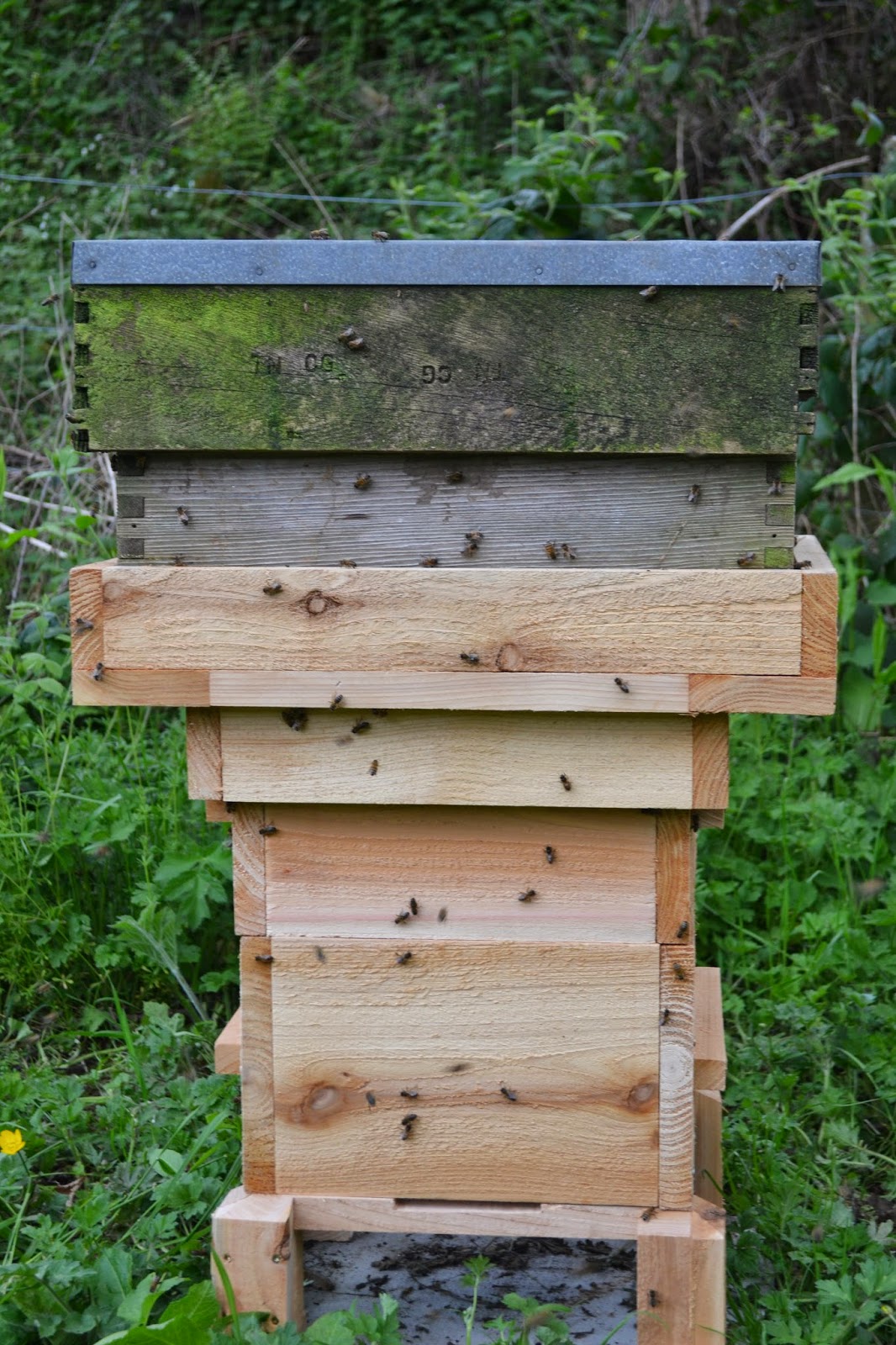At last the flat pack Warres have arrived.
The wood for the hives has been locally sourced from sustainable resources within the Brecon Beacons National Park. The favoured wood for hives which score high on outdoor durability and weight is red cedar wood but in its absence we are using larch. This is heavier than the cedar wood but as the hives are of smaller dimensions than other hives we are hoping they are still quite manageable.
Work commences
- Armed with a handful of phone pictures, a couple of electric screwdrivers and plenty of enthusiasm we set to work on construction.
2. Being of questionable carpentry experience I was given the far simpler job of constructing the boxes. All with pre-drilled holes this was an extremely straight-forward procedure.
3. Somewhat trickier I left the roof to Gareth. Nice and deep to allow for insulation and ventilation.
We did think it prudent to cover the screw tops with a sealant to stop water getting in.
4. The second box was slightly more challenging as we had to consider the adapter which would fit into it holding the Langstroth hive.
 |
| Here we can see how the box literally just sits atop the floor. |
6. And looking down from the top the castellations are visible and the mesh of the floor.

7. Each of the tops bars should be primed with a bead of beeswax running down the underside. We'll cover this in a demo for anyone who is unsure of how to do this.
8. All the top bars ready to fit into the castellations
9. We tapped 8 bars into each of the boxes. Some people choose to nail them down but we want them accessible for inspection.
11. First job to move the Langstroth and place the Warre in its place. Then we hefted the Langstroth into the adapter above the 2 Warre boxes leaving the Langstroth floor outside for the stragglers to find their way in. This wasn't a day too soon as the bees had been clustering on the outside of the old hive and were desperate for space. Hopefully they will be settling into their new home.
Related links:










This comment has been removed by the author.
ReplyDeleteHi Andrea, just a quick query...
ReplyDeleteI was wondering what was the best way to attach wax to the bars, and what wax to use?
I only had the sheet wax and so wrapped it around 3 bars in the centre and melted some down to 'paint' on the remaining bars. Will this be sufficient to encourage the bees to draw out wax, and strong enough to hold the comb that they build - especially when it's heavy and full of honey?
Cheers Charlie.
Hi Charlie, What I do is to soak one of the top bars in cold water and hold it against the centre of the underside of the top bar. Using this cold, wet, flat surface against the top bar as a template I dribble a bead of melted beeswax along this and turn it round to create a sort of curtain of wax. The chances are the bees will 'glue' the comb to the sides of the hive thereby making it very much fixed to the box. I have nationals which have a larger surface area of comb than Warres and they haven't broken under the weight of honey-yet.
Delete